Country
Crash of a Swearingen SA226T Merlin IIIB in Winslow: 2 killed
Date & Time:
Apr 23, 2021 at 1519 LT
Registration:
N59EZ
Survivors:
No
Schedule:
Scottsdale - Winslow
MSN:
T-394
YOM:
1981
Crew on board:
2
Crew fatalities:
Pax on board:
0
Pax fatalities:
Other fatalities:
Total fatalities:
2
Aircraft flight hours:
5959
Circumstances:
The pilot was conducting a personal flight and was descending the airplane to the destination airport. Automatic dependent surveillance-broadcast (ADS-B) data showed that the airplane accomplished several turning maneuvers near the airport. These turns occurred from an elevation of 6,000 to 4,950 ft mean sea level, at which time the data ended. The airplane was 80 ft above ground level at the time. Witnesses reported seeing a low-flying airplane perform a turn and then veer toward the ground. The airplane came to rest about 4 miles east of the destination airport and 70 ft from the last data target. A postcrash fire ensued. Postaccident examination of the airframe and engines found no mechanical anomalies that would have precluded normal operation. Examination of the left engine revealed that the engine was likely producing power. The right engine examination revealed damage consistent with low or no rotation at the time of the accident, including distinct, localized contact marks on the rotating propeller shaft. In addition, no metal spray was found in the turbine section, and no dirt was found within the combustor section. The examination of the right propeller blades showed chordwise scoring with the blades bent aft and twisted toward a low-pitch setting. Examination of the fuel system noted no anomalies. The airplane was equipped with a single redline (SRL) autostart computer. Examination of the right (R) SRL-OFF annunciator panel light bulb showed signatures of hot filament stretch, which was consistent with illumination of the light at the time of the accident. The SRL light normally extinguishes above an engine speed of 80% rpm. Given the low rotational signatures on the right engine and the illuminated “R SRL-OFF” warning light, it is likely that the right engine lost engine power during the flight for reasons that could not be determined.
Probable cause:
The loss of engine power to the right engine for reasons that could not be determined. Contributing to the accident was the pilot’s failure to maintain control of the airplane.
Final Report:

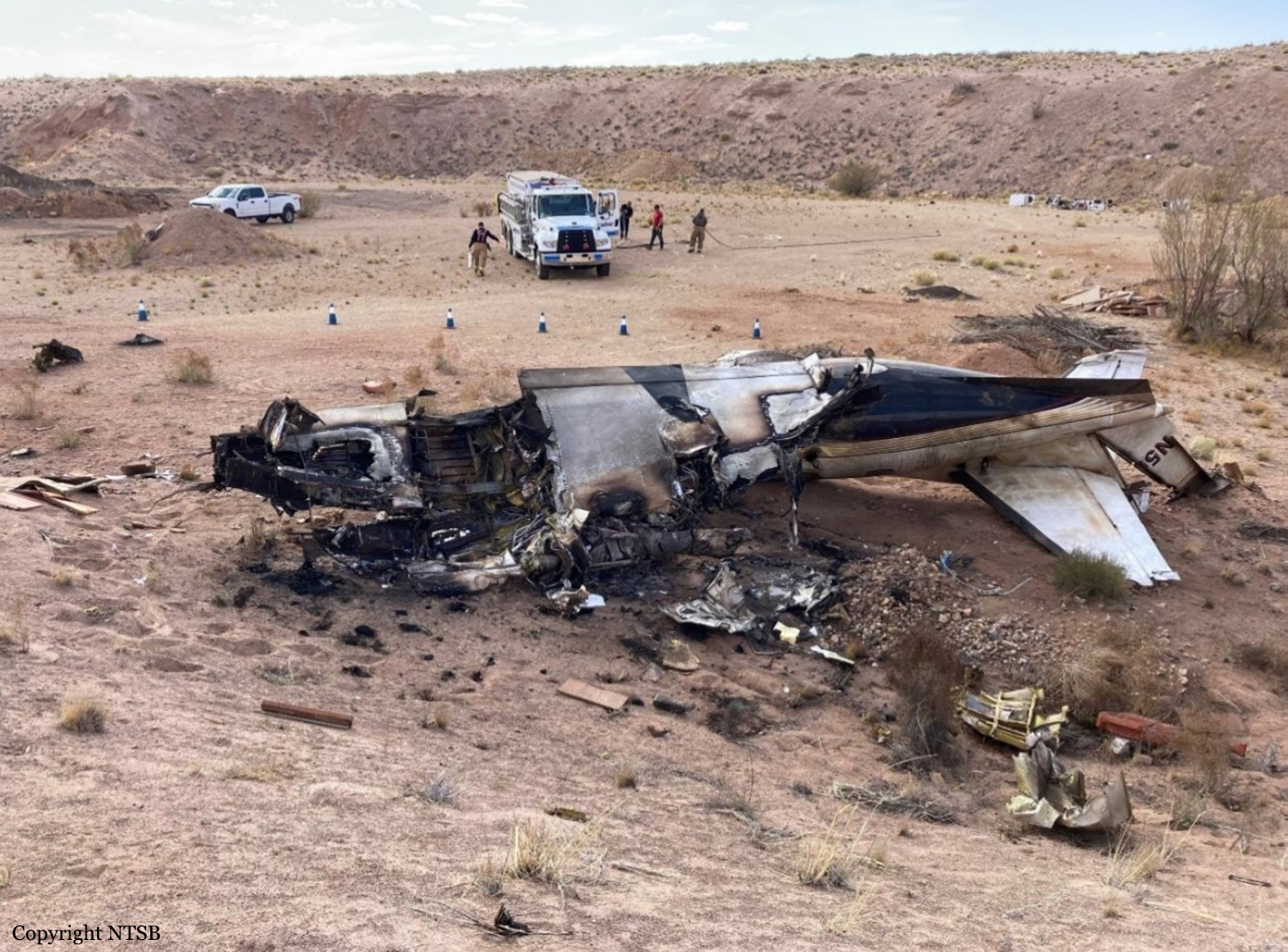

Crash of a Swearingen SA226T Merlin IIIB in Arnprior
Date & Time:
May 26, 2017
Registration:
C-GFPX
Survivors:
Yes
Schedule:
North Bay - Arnprior
MSN:
T-310
YOM:
1979
Crew on board:
2
Crew fatalities:
Pax on board:
1
Pax fatalities:
Other fatalities:
Total fatalities:
0
Circumstances:
The twin engine airplane departed North Bay on an ambulance flight to Arnprior, carrying two pilots and a doctor. Following an uneventful flight, the crew was cleared for a VOR/DME approach to runway 28 under VFR conditions. On short final, the aircraft descended too low and impacted ground 50 metres short of runway. Upon impact, the nose gear collapsed and the airplane slid for about 600 metres before coming to rest. All three occupants evacuated safely and the aircraft was damaged beyond repair.
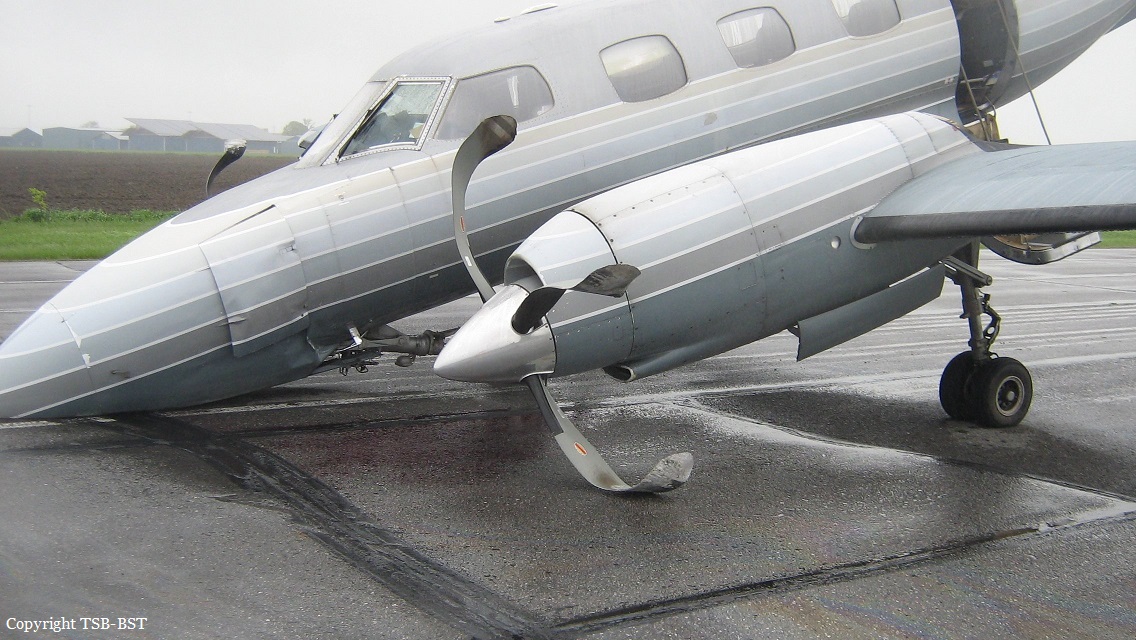
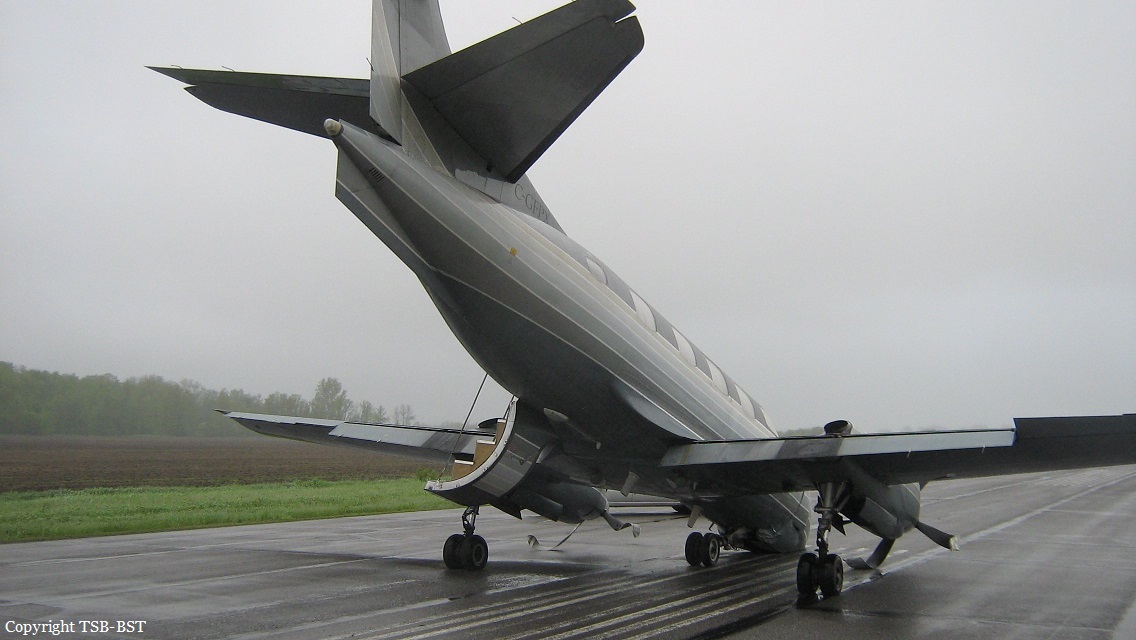

Crash of a Swearingen SA226T Merlin IIIB in Farmingdale
Date & Time:
Jun 20, 2016 at 1758 LT
Registration:
N127WD
Survivors:
Yes
Schedule:
White Plains - Farmingdale
MSN:
T-297
YOM:
1978
Crew on board:
2
Crew fatalities:
Pax on board:
0
Pax fatalities:
Other fatalities:
Total fatalities:
0
Captain / Total hours on type:
410.00
Copilot / Total hours on type:
5
Aircraft flight hours:
4500
Circumstances:
According to the pilot in command (PIC), he was conducting an instructional flight for his "new SIC (second in command)," who was seated in the left seat. He reported that they had flown two previous legs in the retractable landing gear-equipped airplane. He recalled that, during the approach, they discussed the events of their previous flights and had complied with the airport control tower's request to "keep our speed up." During the approach, he called for full flaps and retarded the throttle to flight idle. The PIC asserted that there was no indication that the landing gear was not extended because he did not hear a landing gear warning horn; however, he was wearing a noise-cancelling headset. He added that the landing gear position lights were not visible because the SIC's knee obstructed his view of the lights. He recalled that, following the flare, he heard the propellers hit the runway and that he made the decision not to go around because of unknown damage sustained to the propellers. The airplane touched down and slid to a stop on the runway. The airplane sustained substantial damage to the fuselage bulkheads, longerons, and stringers. The SIC reported that the flight was a training flight in visual flight rules conditions. He noted that the airspace was busy and that, during the approach, he applied full flaps, but they failed to extend the landing gear. He added that he did not hear the landing gear warning horn; however, he was wearing a noise-cancelling headset. The Federal Aviation Administration Aviation Safety Inspector that examined the wreckage reported that, during recovery, the pilot extended the nose landing gear via the normal extension process. However, due to significant damage to the main landing gear (MLG) doors, the MLG was unable to be extended hydraulically or manually. He added that an operational check of the landing gear warning horn was not accomplished because the wreckage was unsafe to enter after it was removed from the runway. The landing gear warning horn was presented by an aural tone in the cockpit and was not configured to be heard through the pilots' noise-cancelling headsets. When asked, the PIC and the SIC both stated that they could not remember who read the airplane flight manual Before Landing checklist.
Probable cause:
The pilot-in-command's failure to extend the landing gear before landing and his failure to use the Before Landing checklist. Contributing to the accident was the pilots' failure to maintain a sterile cockpit during landing.
Final Report:


Crash of a Swearingen SA226T Merlin III in Andorra
Date & Time:
Apr 26, 2016 at 1535 LT
Registration:
N125WG
Survivors:
Yes
Schedule:
Alicante - Andorra
MSN:
T-250
YOM:
1974
Crew on board:
1
Crew fatalities:
Pax on board:
4
Pax fatalities:
Other fatalities:
Total fatalities:
0
Captain / Total hours on type:
1200.00
Circumstances:
The twin engine airplane departed Alicante-Mutxamel Airport at 1221LT on a private flight to Andorra, carrying four passengers and one pilot. Following an uneventful flight at an altitude of 12,500 feet, the pilot informed ATC about electrical problems then initiated the descent to Andorra. About two minutes later, the electrical system totally failed. The pilot continued the approach to Andorra-La Seu d'Urgell Airport. After touchdown on runway 21, the undercarriage collapsed. The aircraft veered off runway to the right and came to rest in a grassy area. All five occupants evacuated safely and the aircraft was damaged beyond repair.
Probable cause:
It is considered that the accident was caused by an error in the application of the emergency extension procedure of the landing gear following a total failure of the electrical system.
Contributing factors :
- Start a visual flight with a deferred pending repair in the electrical system, specifically with the generator on the right side.
- Lack of recent training and simulation with emergency procedures.
- The versatility of the pilot and diversity of different aircraft types flown.
- The non-activation of the warning light on the left-hand side of the cockpit panel when the electrical system failed about 30 minutes prior to the total exhaustion of all batteries.
Contributing factors :
- Start a visual flight with a deferred pending repair in the electrical system, specifically with the generator on the right side.
- Lack of recent training and simulation with emergency procedures.
- The versatility of the pilot and diversity of different aircraft types flown.
- The non-activation of the warning light on the left-hand side of the cockpit panel when the electrical system failed about 30 minutes prior to the total exhaustion of all batteries.
Final Report:
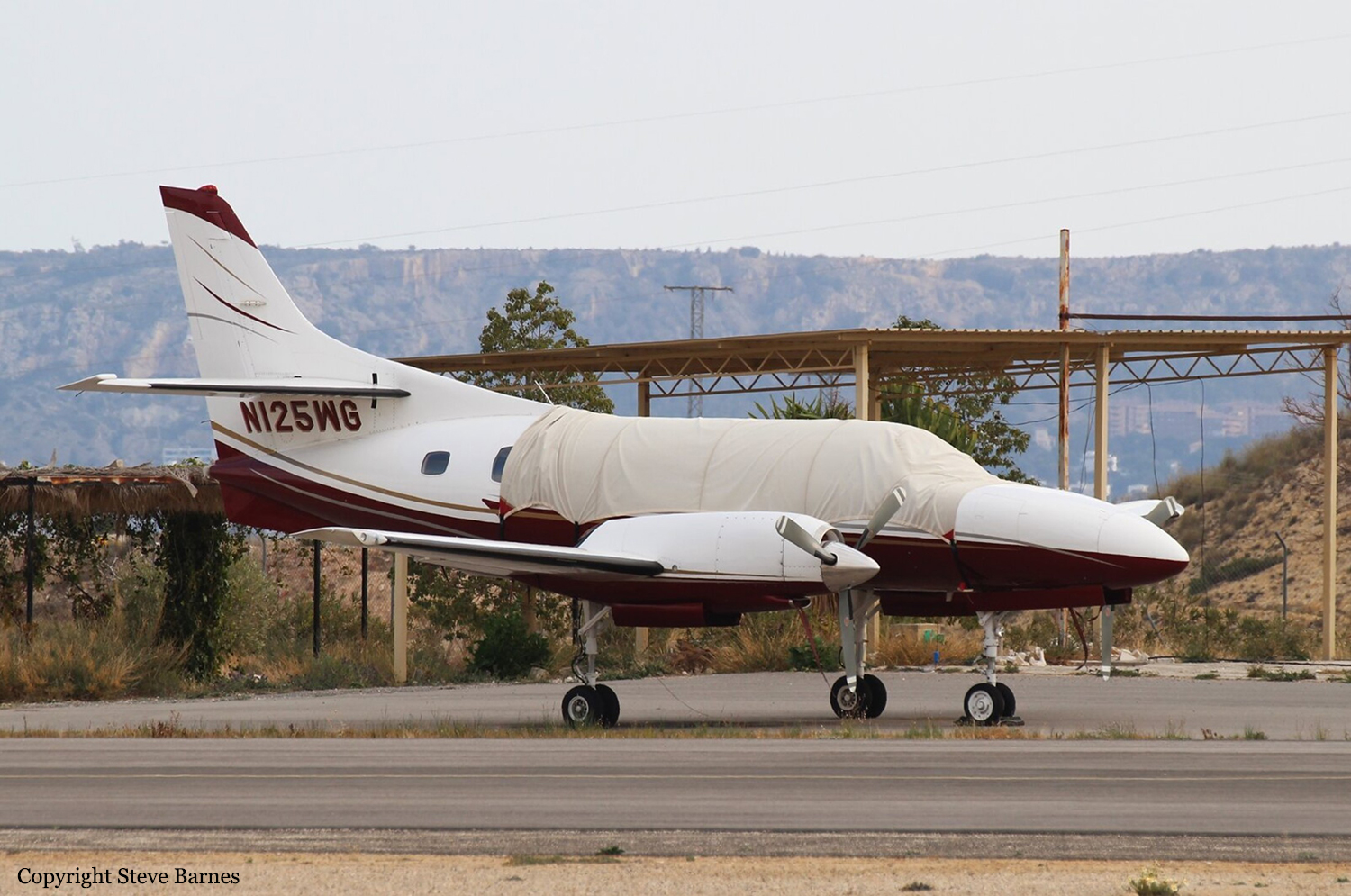
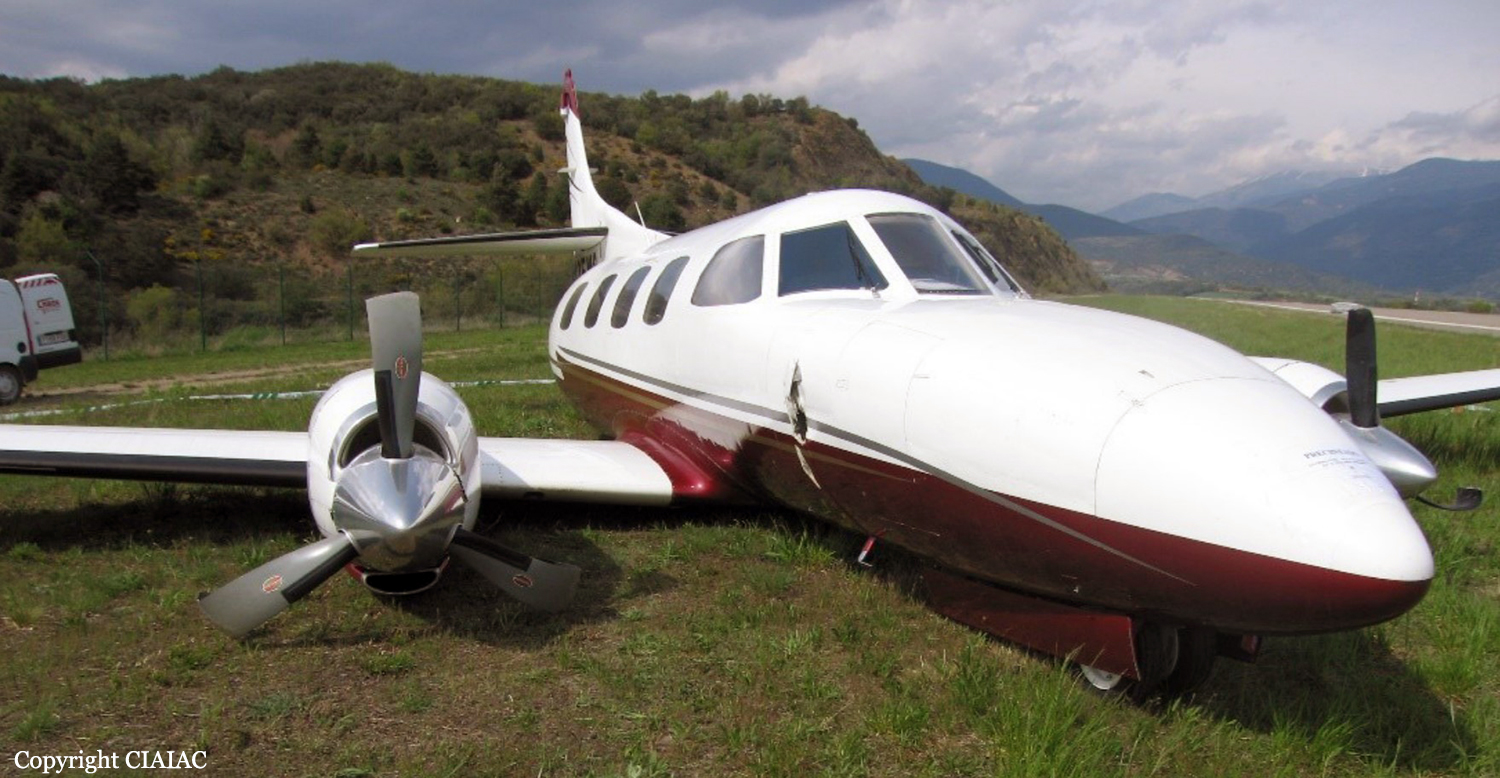
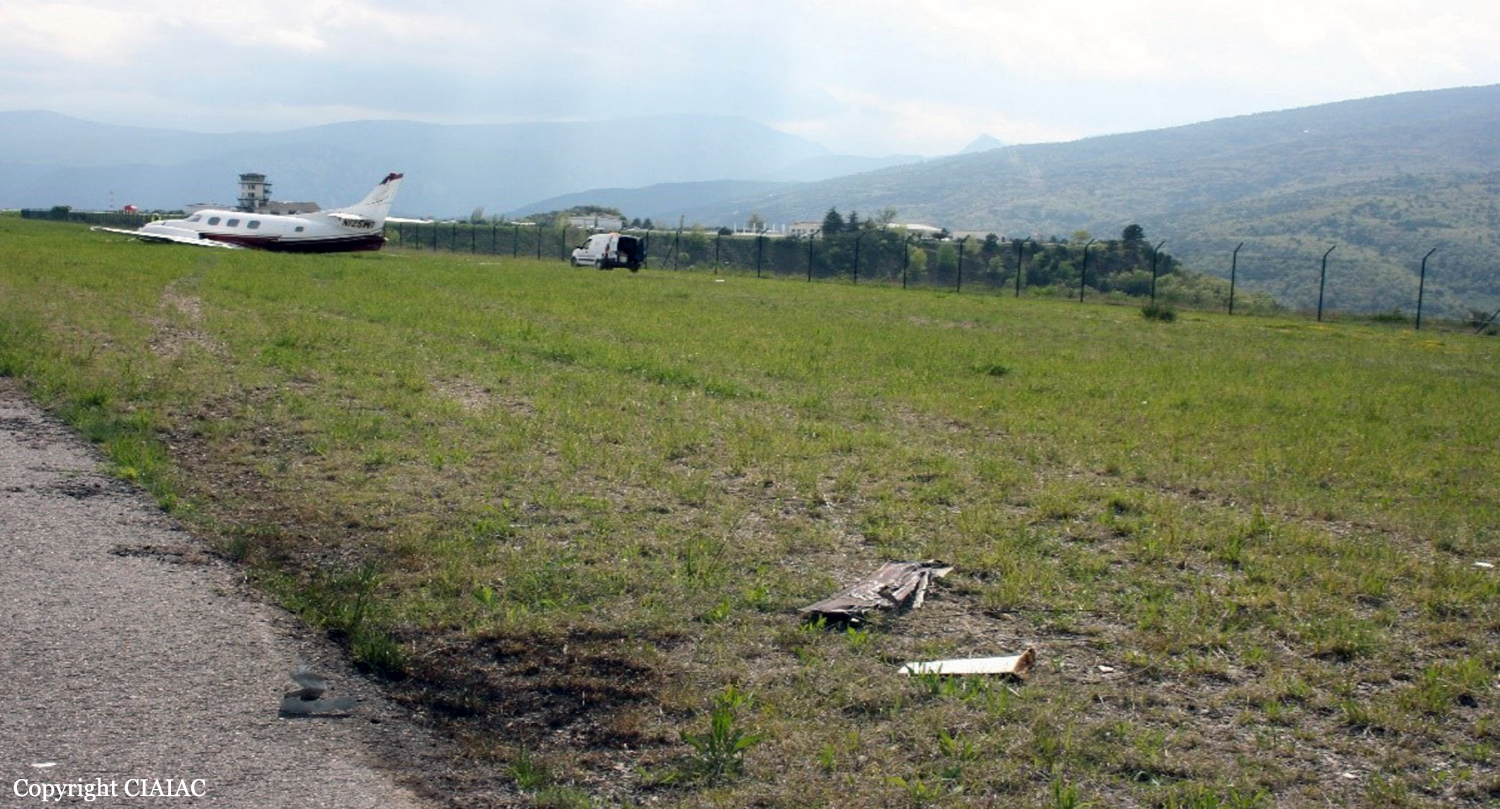

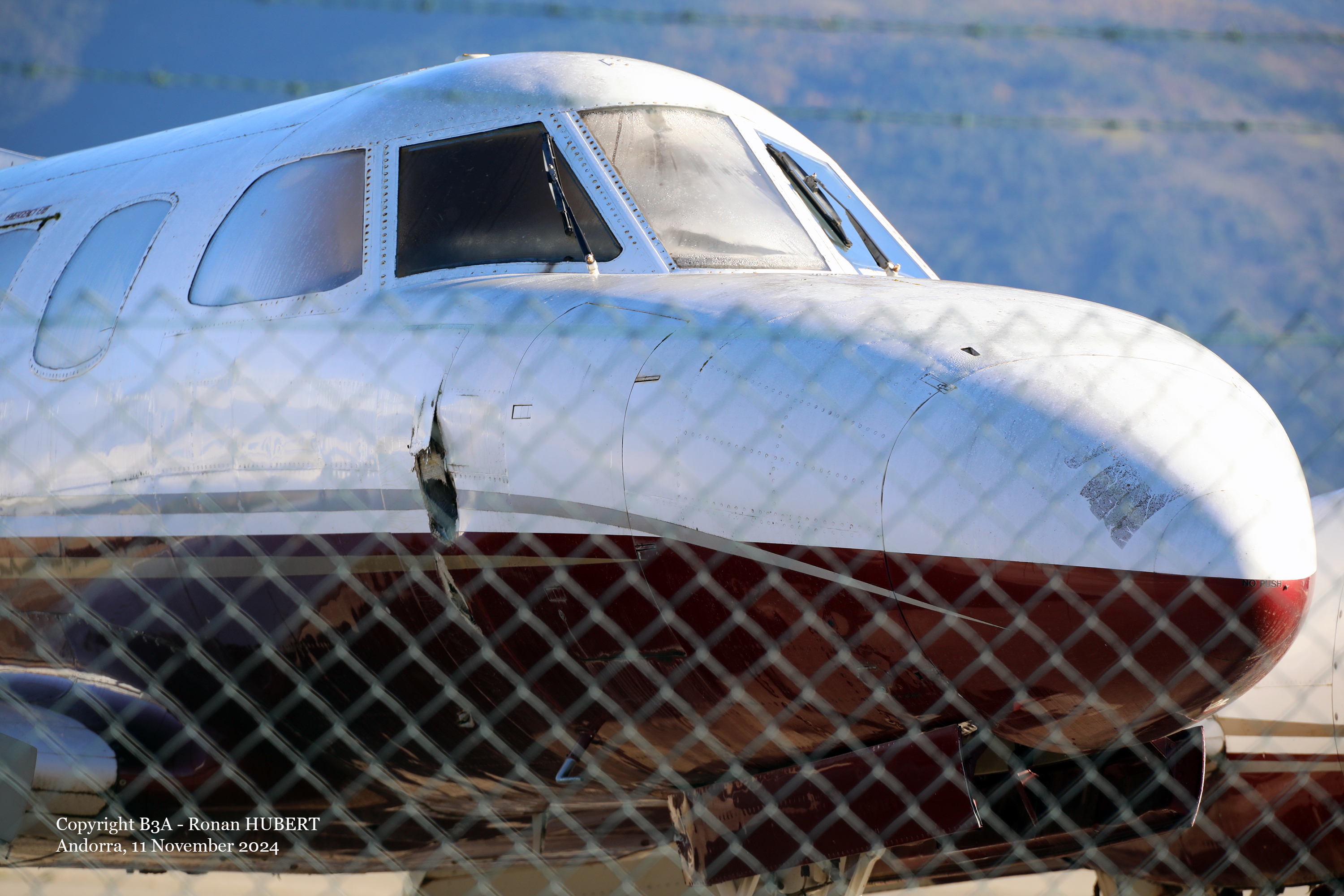
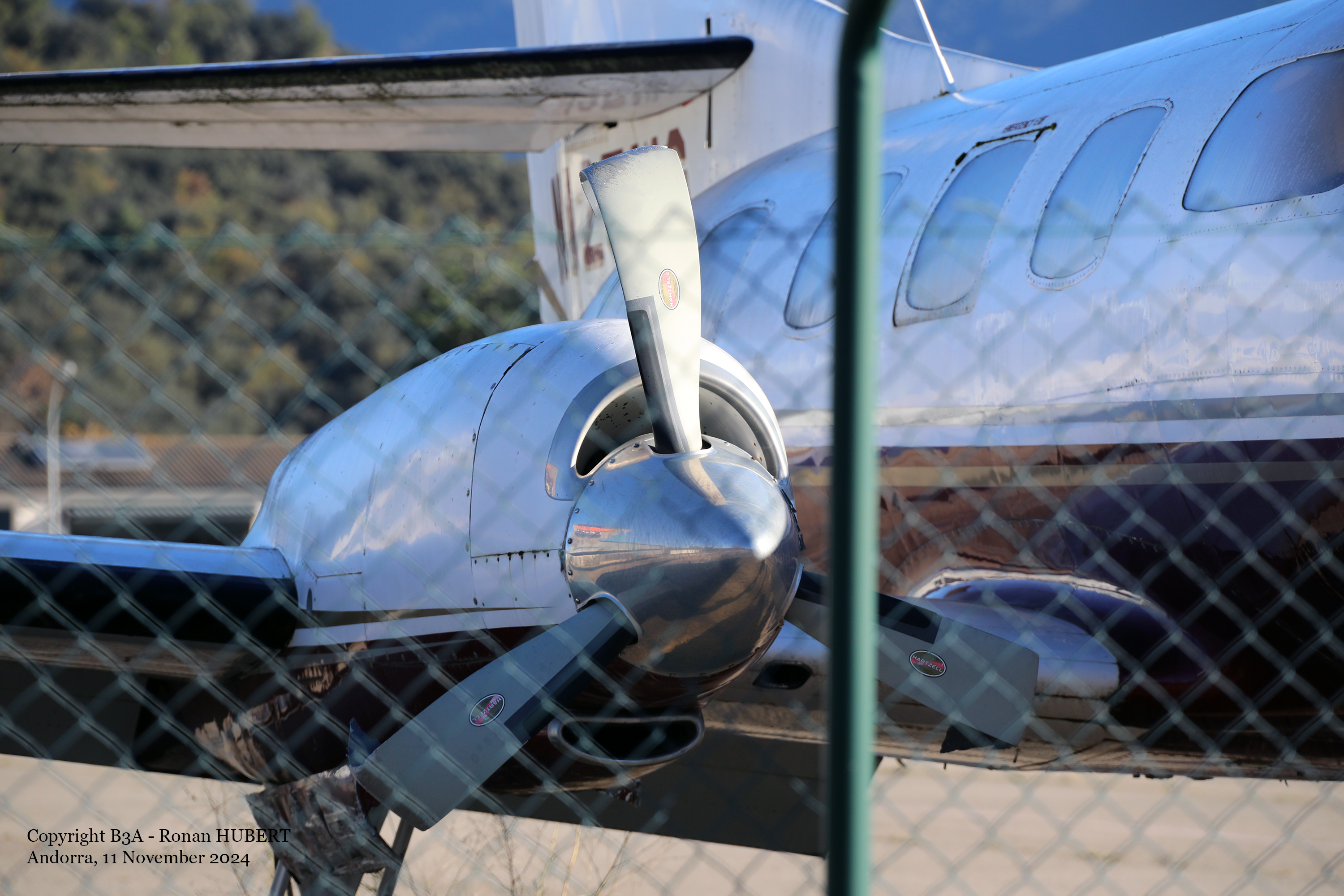

Crash of a Swearingen SA226T Merlin IIIB in Teterboro
Date & Time:
May 31, 2005 at 1130 LT
Registration:
N22DW
Survivors:
Yes
Schedule:
Nantucket – Teterboro
MSN:
T-317
YOM:
1979
Crew on board:
1
Crew fatalities:
Pax on board:
0
Pax fatalities:
Other fatalities:
Total fatalities:
0
Captain / Total hours on type:
1400.00
Aircraft flight hours:
4698
Circumstances:
During takeoff from the departure airport, as the pilot advanced the throttles, the aircraft made a "sudden turn to the right." The pilot successfully aborted the takeoff, performed an engine run-up, and then took off without incident. The pilot experienced no anomalies during the second takeoff or the flight to the destination airport. As he reduced the power while in the traffic pattern, at the destination airport, the left engine accelerated to 60 percent power. The pilot reported to the tower that he had "one engine surging and another engine that seems like I lost control or speed." The pilot advanced and retarded the throttles and the engines responded appropriately, so he continued the approach. As the pilot flared the airplane for landing, the left engine surged to 65 percent power with the throttle lever in the "idle" position. The airplane immediately turned to the right; the right wing dropped and impacted the ground. Disassembly of the engines revealed no anomalies to account for surging, or for an uncommanded increase in power or lack of throttle response. Functional testing of the fuel control units and fuel pumps revealed the flight idle fuel flow rate was 237 and 312 pounds per hour (pph), for the left and right engines, respectively. These figures were higher than the new production specification of 214 pph. According to the manufacturer, flight idle fuel flow impacts thrust produced when the power levers are set to the flight idle position and differences in fuel flow can result in an asymmetrical thrust condition.
Probable cause:
The pilot's improper decision to depart with a known deficiency, which resulted in a loss of control during landing at the destination airport. A factor was the fuel control units' improper flight idle fuel flow rate.
Final Report:




